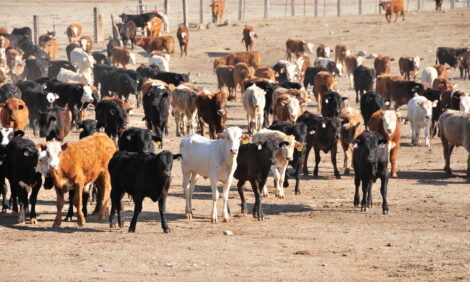



Castration Methods: Tension Band vs Surgery
AUSTRALIA - Meat and Livestock Australia (MLA) funded research has taken the guesswork out of which castration method delivers the best animal welfare outcomes for the northern cattle industry.
University of Queensland Senior Research Fellow Carol Petherick, who recently completed research comparing tension banding with surgical castration, says appearances are deceiving and less blood is by no means a guarantee of less pain or less risk of infection.
Carol said the research clearly showed tension-banding castration is an inferior option to surgery for the northern beef cattle industry.
“Castration is one of the most common procedures carried out in the beef industry. From a marketing perspective tensionbanded castration is promoted as producing superior welfare and production outcomes compared to other castration methods, particularly for older bulls,” she said.
“However, our research shows this is perception, not fact.” Three months post-castration, researchers found there were no weight or production differences between the two methods.
Research approach Carol, along with a team from CSIRO, New Zealand’s Massey University and the Queensland Government, compared the welfare outcomes of tension banding versus surgical castration on two age groups of Brahman bulls: weaners (seven to 10 months old) and older bulls (22 to 25 months old).
Pain was assessed by measuring blood cortisol levels (a hormone activated by stress) and by recording the animals’ behaviour. Wounds were also assigned a score to help monitor post-castration healing and recovery.
“We found banding caused less pain and discomfort than surgical castration during the procedures,” Carol said.
“However, during the next 1.5 hours, banded bulls from both age groups experienced greater pain and stress than the surgically castrated bulls.”
Relief Carol said ketoprofen (a non-steroidal anti-inflammatory) helped alleviate pain in the surgically castrated mature bulls (mostly between 1.5 and three hours afterwards) but not in the mature banded bulls.
“Ketoprofen made little difference to the weaner groups, they all recorded high cortisol concentrations but we believe this was because the mature bulls were all quiet and accustomed to being handled while the weaners were not, and the cortisol response to pain was masked by their stress response to being handled and restrained,” she said.
Two to four weeks post-castration the mature banded bulls were still showing elevated cortisol compared to the surgical castrates, while haptoglobin concentrations (an indicator of inflammation) were significantly high in all banded cattle.
TheCattleSite News Desk


